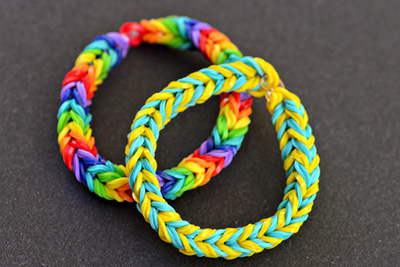
Source: loomlove.com
The Ministry of Health will like to address the issue of phthalates, a carcinogenic chemical detected in the Loom Band and its subsequent withdrawal by one of the toy retailers in Britain. It is known that phthalates are substances added to plastic to increase its flexibility, transparency, durability, and longevity. They contribute to between 10% – 60% of the plastic by weight in the product. It is classified as a Class 3 carcinogen i.e. having proven
carcinogenic effects in animal models but not in humans. “Phthalate/DEHP is not classifiable as to its carcinogenicity to humans (Group 3) by the International Agency of Research on Cancer (IARC). According to IARC, there is inadequate evidence in humans for the carcinogenicity of phthalate except in experimental animals. Phthalate exposure may be through direct use or by indirect means through leaching and general environmental contamination. Oral is believed to be the main source of di (2-ethylhexyl) phthalate (DEHP) and other phthalates in the general population. The use of some phthalates has been restricted for use in children’s toys in the European Union since 1999. Likewise, other developed countries such as the United States of America and Canada have restricted DEHP, BBP, and DBP for all toys. In the case of DINP, DIDP and DNOP, these are restricted only for toys which could be possibly taken into the mouth by children. The restriction states that the amount of phthalates may not be greater than 0.1% mass percent of the plasticized part of the toy. These phthalates are allowed at any concentration in other products and other phthalates are not restricted.
The National Industrial Chemicals Notification and Assessment Scheme (NICNAS Australia) has conducted a scientific risk assessment of DEHP. NICNAS determined that the risk applies to young children up to and including 36 months of age who may extensively chew and suck (mouth) objects on a recurrent basis for substantial periods of time in excess of 40 minutes per day. The NICNAS study also found:
- The risk does not apply to older children or adults, who have less substantial mouth contact with plastic materials that contain DEHP
- Skin contact with products containing DEHP is not a safety concern for any age group, including infants.
In response to concerns raised in relation to the Loom Band, it needs to state that this product is not deemed a toy but marketed as an ornamental or costume jewellery item, more for older children and young adults. Taking into consideration the outcome of the risk assessment conducted by NICNAS, there is no necessity to consider any ban or impose restriction of its use at this point in time.
Nonetheless, we would like to advise parents that they should keep the Loom Band away from any child below the age of 4 years for reasons as stated above.
Thank you.
DATUK DR. NOOR HISHAM BIN ABDULLAH
Director General of Health Malaysia 05 September 2014
